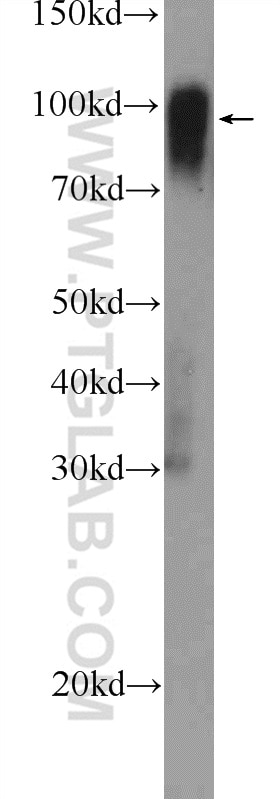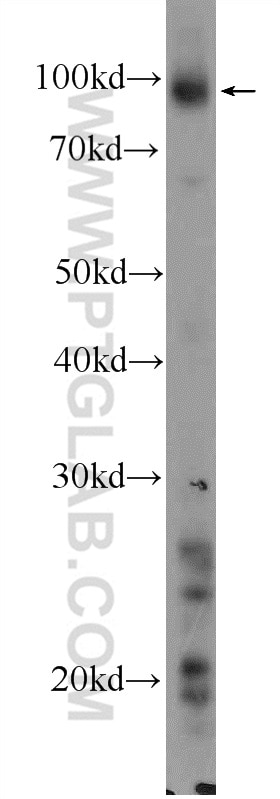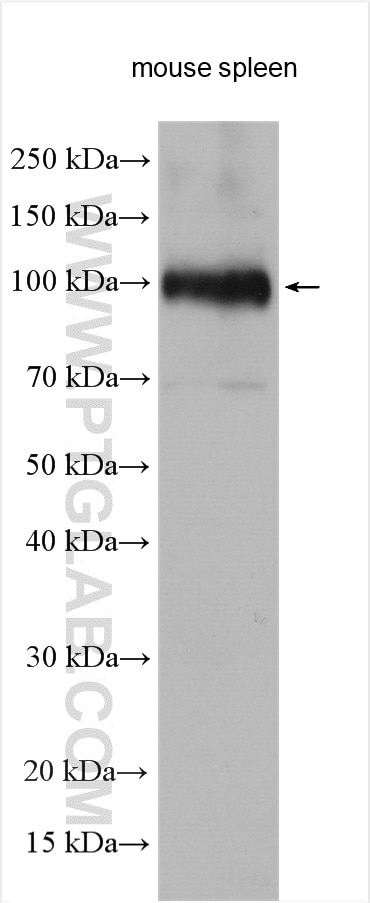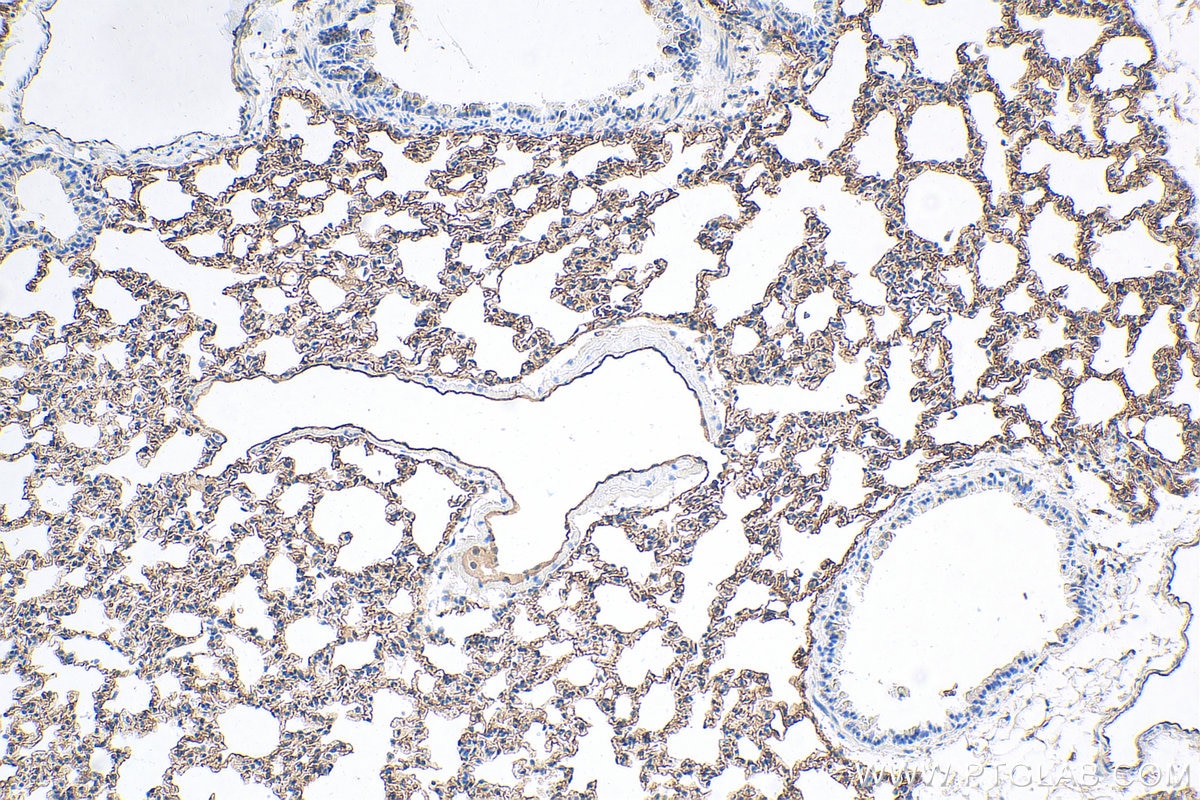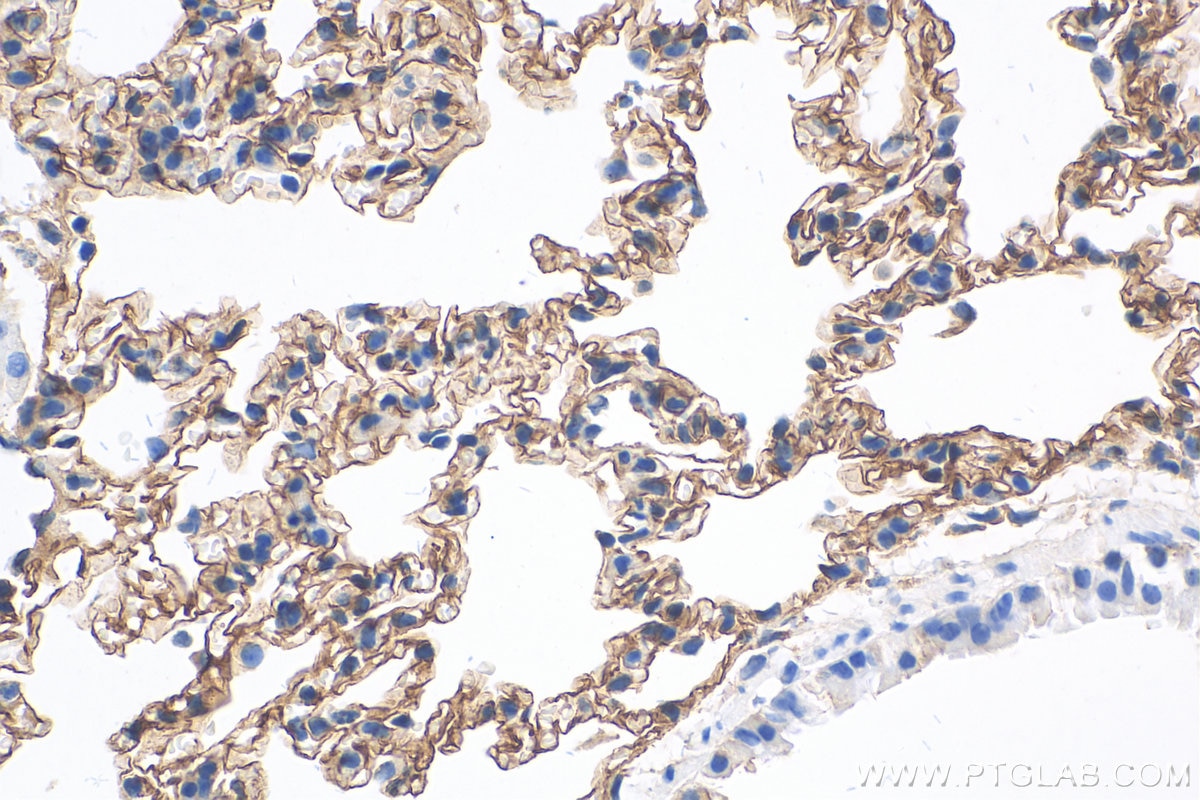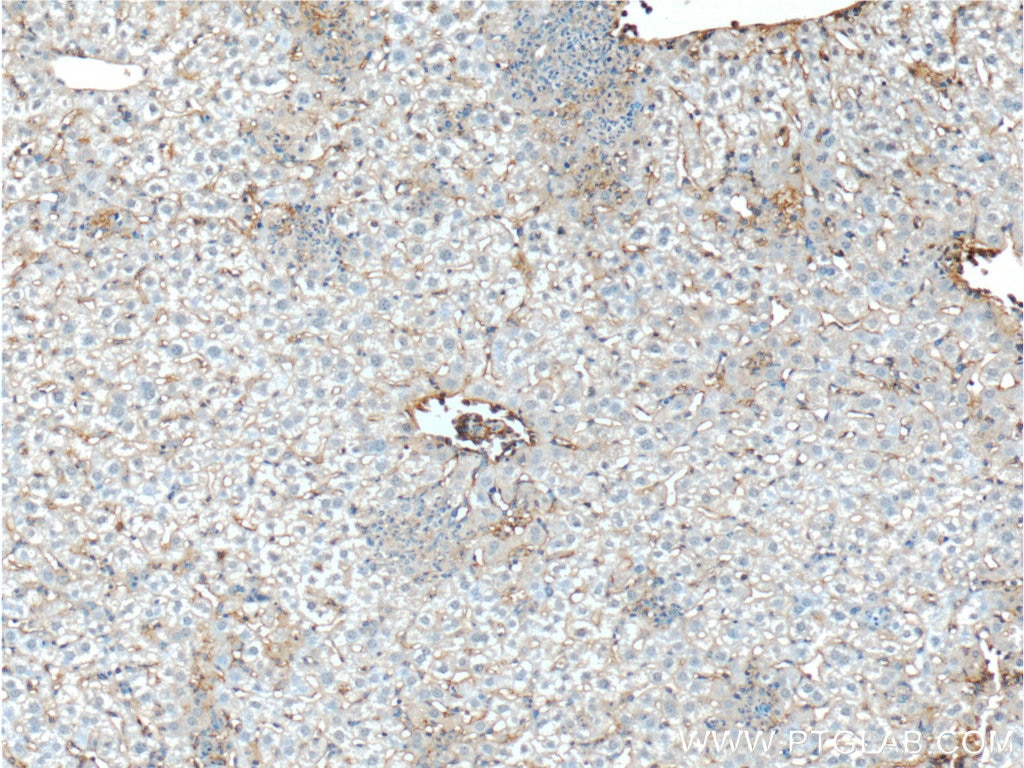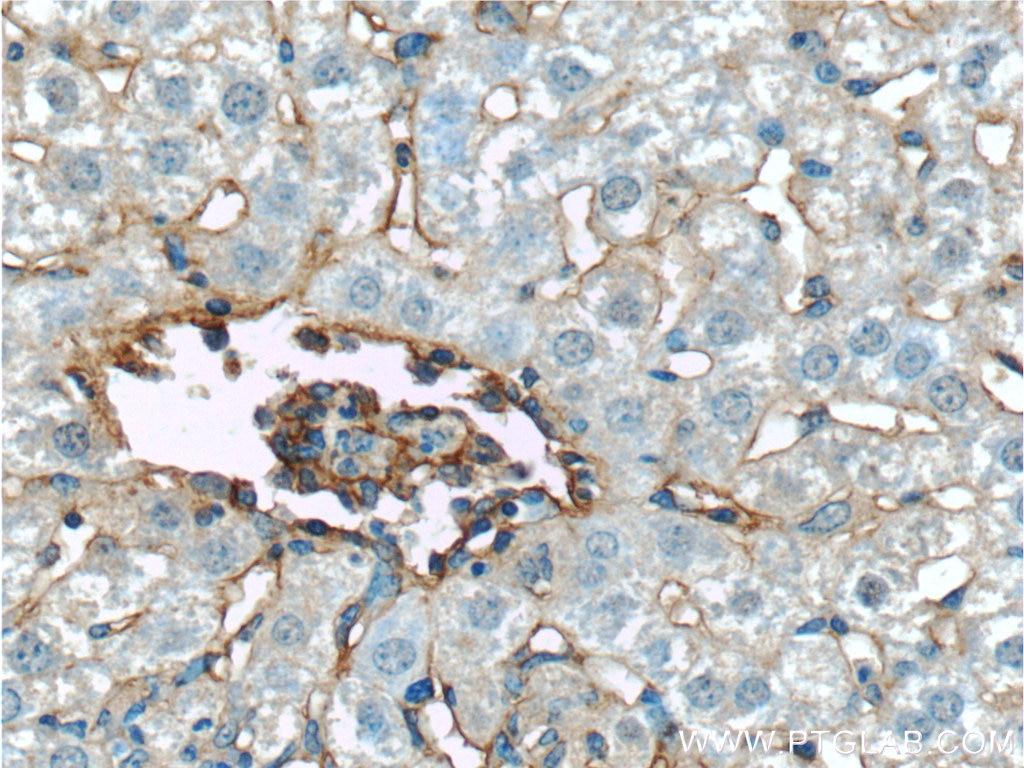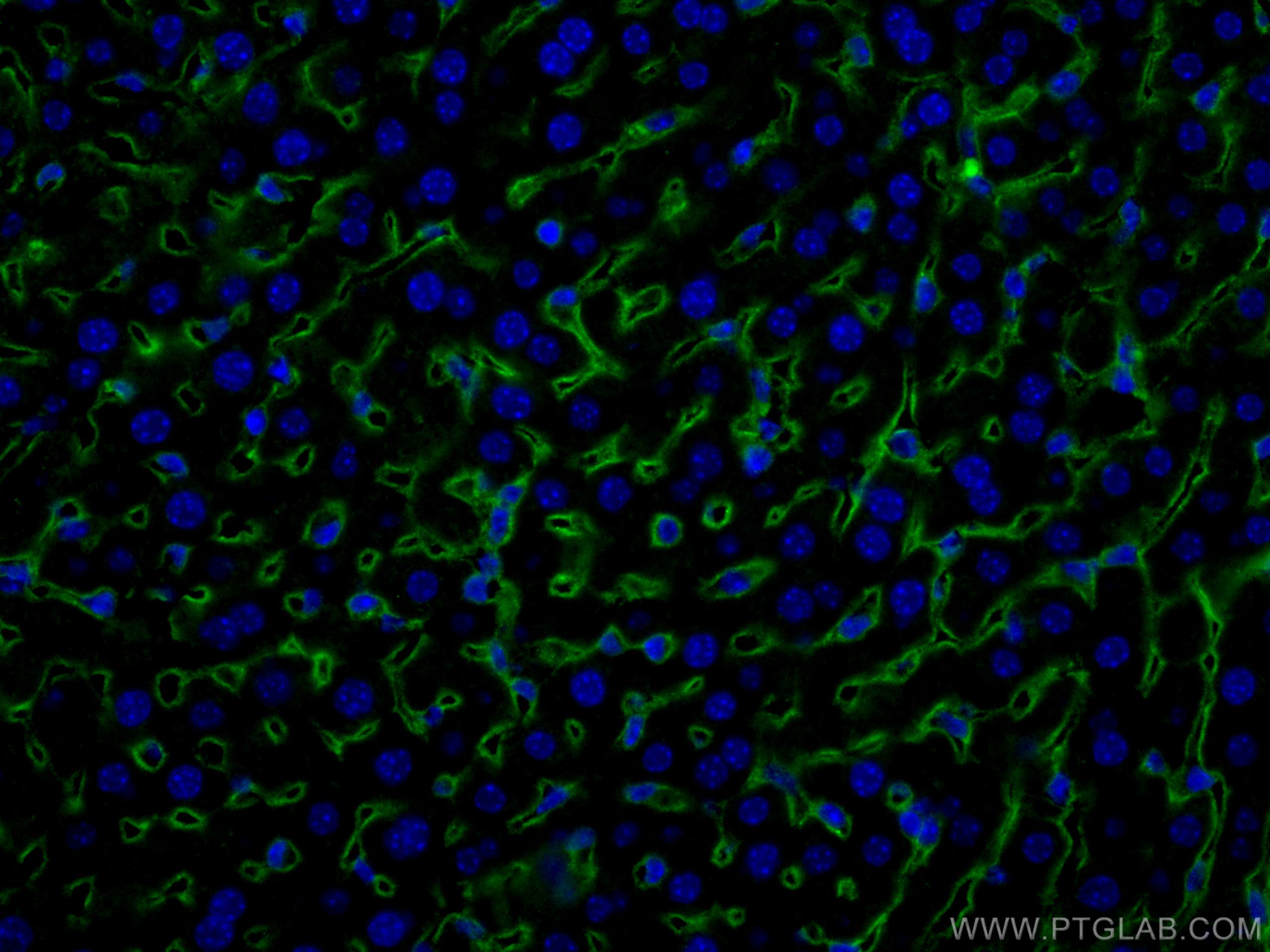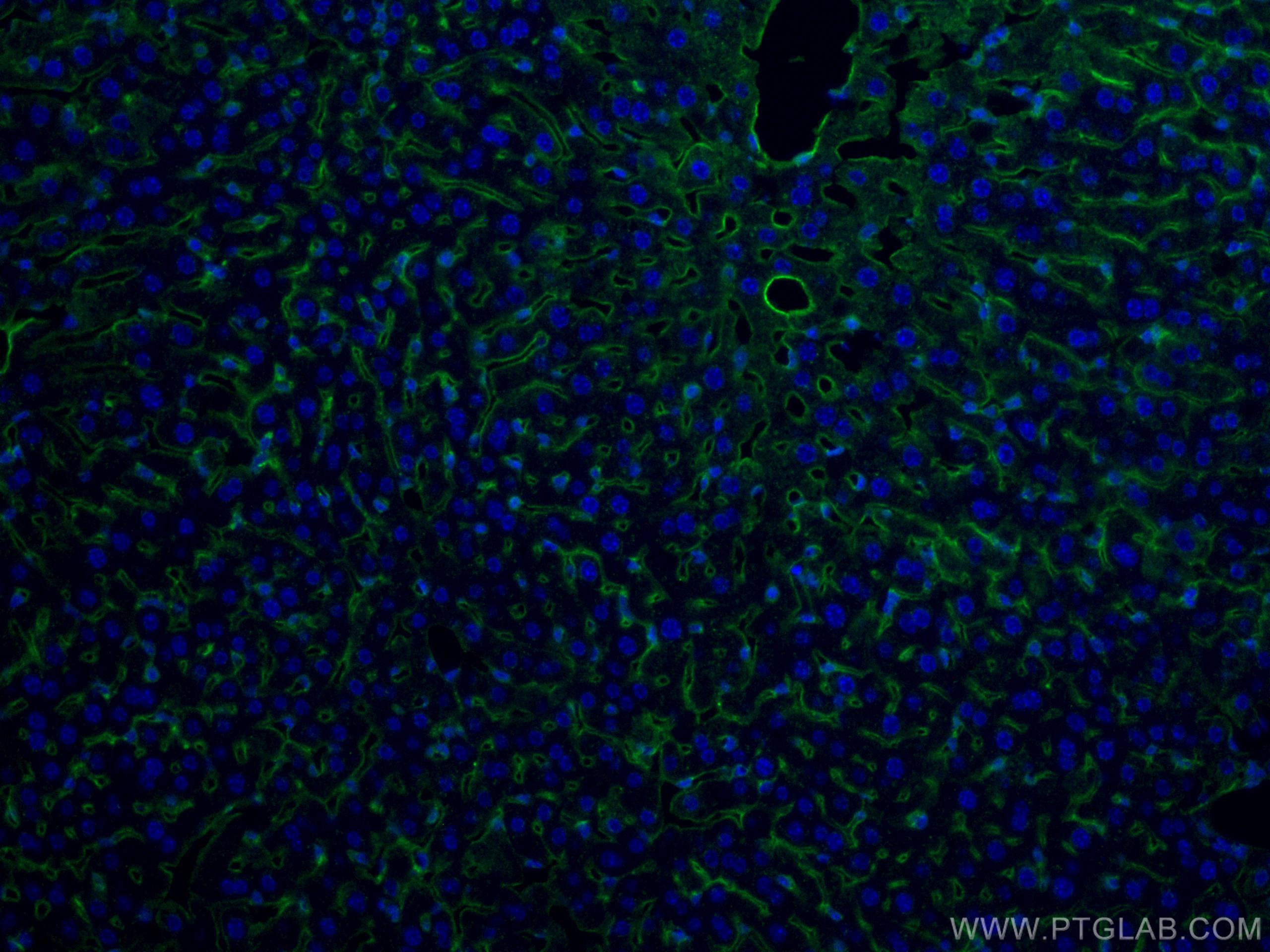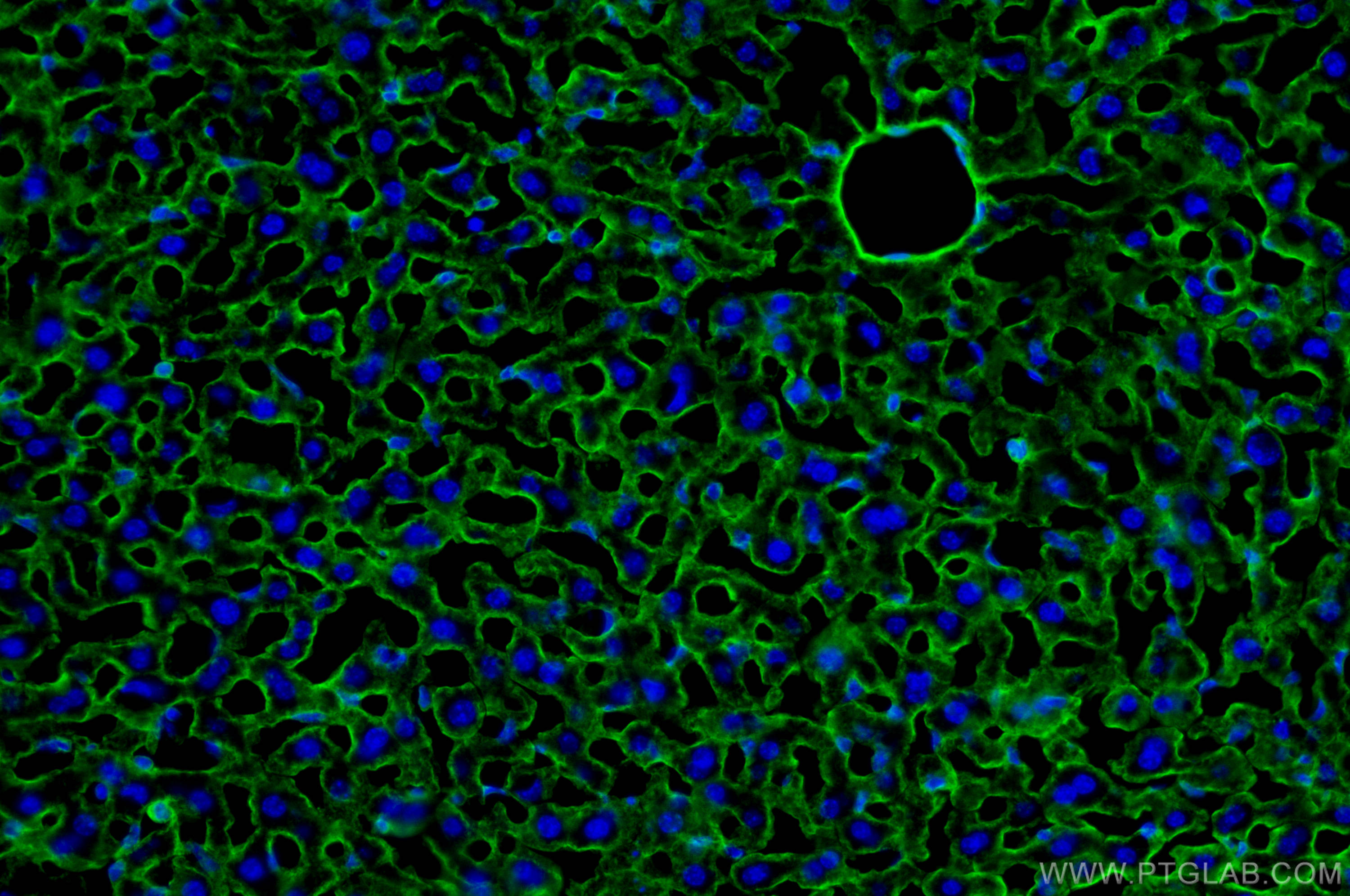- Phare
- Validé par KD/KO
Anticorps Polyclonal de lapin anti-ICAM-1/CD54
ICAM-1/CD54 Polyclonal Antibody for WB, IHC, IF-P, IF-Fro, ELISA
Hôte / Isotype
Lapin / IgG
Réactivité testée
rat, souris et plus (2)
Applications
WB, IHC, IF-P, IF-Fro, ELISA
Conjugaison
Non conjugué
N° de cat : 10020-1-AP
Synonymes
Galerie de données de validation
Applications testées
| Résultats positifs en WB | tissu cérébral de souris, tissu hépatique de souris, tissu splénique de souris |
| Résultats positifs en IHC | tissu pulmonaire de souris, tissu hépatique de souris il est suggéré de démasquer l'antigène avec un tampon de TE buffer pH 9.0; (*) À défaut, 'le démasquage de l'antigène peut être 'effectué avec un tampon citrate pH 6,0. |
| Résultats positifs en IF-P | tissu hépatique de souris, |
| Résultats positifs en IF-Fro | tissu hépatique de souris, |
Dilution recommandée
| Application | Dilution |
|---|---|
| Western Blot (WB) | WB : 1:1000-1:4000 |
| Immunohistochimie (IHC) | IHC : 1:3200-1:12800 |
| Immunofluorescence (IF)-P | IF-P : 1:500-1:2000 |
| Immunofluorescence (IF)-FRO | IF-FRO : 1:50-1:500 |
| It is recommended that this reagent should be titrated in each testing system to obtain optimal results. | |
| Sample-dependent, check data in validation data gallery | |
Applications publiées
| KD/KO | See 2 publications below |
| WB | See 58 publications below |
| IHC | See 22 publications below |
| IF | See 22 publications below |
Informations sur le produit
10020-1-AP cible ICAM-1/CD54 dans les applications de WB, IHC, IF-P, IF-Fro, ELISA et montre une réactivité avec des échantillons rat, souris
| Réactivité | rat, souris |
| Réactivité citée | rat, bovin, souris, Hamster |
| Hôte / Isotype | Lapin / IgG |
| Clonalité | Polyclonal |
| Type | Anticorps |
| Immunogène | Peptide |
| Nom complet | intercellular adhesion molecule 1 |
| Masse moléculaire calculée | 59 kDa |
| Poids moléculaire observé | 95-100 kDa |
| Numéro d’acquisition GenBank | NM_010493 |
| Symbole du gène | ICAM-1 |
| Identification du gène (NCBI) | 15894 |
| Conjugaison | Non conjugué |
| Forme | Liquide |
| Méthode de purification | Purification par affinité contre l'antigène |
| Tampon de stockage | PBS with 0.02% sodium azide and 50% glycerol |
| Conditions de stockage | Stocker à -20°C. Stable pendant un an après l'expédition. L'aliquotage n'est pas nécessaire pour le stockage à -20oC Les 20ul contiennent 0,1% de BSA. |
Informations générales
Where is ICAM-1 expressed?
Intercellular Adhesion Molecule 1 (ICAM-1), also known as Cluster of Differentiation 54 (CD54) is a transmembrane glycoprotein constitutively expressed at low levels in endothelial cells, pericytes and on some lymphocytes and monocytes1. It is located at the cytoplasmic membrane, with a large extracellular region of mainly hydrophobic amino acids joined to a small transmembrane region and a cytoplasmic tail. It has a molecular weight of 60 to 115 kDa depending on the level of glycosylation.
What is the function of ICAM-1?
ICAM-1 is important in both innate and adaptive immune responses as an adhesion molecule. Although it is constitutively expressed, in the presence of pro-inflammatory cytokines such as TNFα the endothelial cells are activated and upregulate expression of ICAM-12. In blood vessels lined with endothelial cells, leukocytes that are rolling over the surface are able to bind to ICAM-1 and transmigrate through the endothelial barrier and into the tissue. The initial binding of the leukocytes to ICAM-1 causes a Ca2+ release that initiates endothelial cell contraction and weakening of the intercellular tight junctions3, 4. This protein can be used as an indicator of endothelial activation and of vascular inflammation.
What is the role of ICAM-1 in disease?
Beyond the role in the immune response, ICAM-1 has also been identified as the target of attachment for the human rhinovirus, the cause of the common cold. Binding of the virus to ICAM-1 causes the viral capsid to uncoat and leads to release of the genetic material5.
Hubbard, A. K. & Rothlein, R. Intercellular adhesion molecule-1 (ICAM-1) expression and cell signaling cascades. Free Radic. Biol. Med. 28, 1379-86 (2000).
Long, E. O. ICAM-1: getting a grip on leukocyte adhesion. J. Immunol. 186, 5021-3 (2011).
Lawson, C. & Wolf, S. ICAM-1 signaling in endothelial cells. (2009).
Lyck, R. & Enzmann, G. The physiological roles of ICAM-1 and ICAM-2 in neutrophil migration into tissues. Curr. Opin. Hematol. 22, 53-59 (2015).
Xing, L., Casasnovas, J. M. & Cheng, R. H. Structural analysis of human rhinovirus complexed with ICAM-1 reveals the dynamics of receptor-mediated virus uncoating. J. Virol. 77, 6101-7 (2003).
Bui, T. M., Wiesolek, H. L., & Sumagin, R. ICAM-1: A master regulator of cellular responses in inflammation, injury resolution, and tumorigenesis. Journal of leukocyte biology. 108(3), 787-799 (2020).
Protocole
| Product Specific Protocols | |
|---|---|
| WB protocol for ICAM-1/CD54 antibody 10020-1-AP | Download protocol |
| IHC protocol for ICAM-1/CD54 antibody 10020-1-AP | Download protocol |
| IF protocol for ICAM-1/CD54 antibody 10020-1-AP | Download protocol |
| Standard Protocols | |
|---|---|
| Click here to view our Standard Protocols |
Publications
| Species | Application | Title |
|---|---|---|
Immunity Toll-like receptor 4 signaling by follicular dendritic cells is pivotal for germinal center onset and affinity maturation. | ||
Nature Mechanosensing by β1 integrin induces angiocrine signals for liver growth and survival. | ||
Gastroenterology ECM1 Prevents Activation of Transforming Growth Factor β, Hepatic Stellate Cells, and Fibrogenesis in Mice. | ||
Hepatology Angiocrine Wnt signaling controls liver growth and metabolic maturation in mice. | ||
Nat Commun Reducing Akt2 in retinal pigment epithelial cells causes a compensatory increase in Akt1 and attenuates diabetic retinopathy | ||
EBioMedicine Patient-derived melanoma organoid models facilitate the assessment of immunotherapies |
Avis
The reviews below have been submitted by verified Proteintech customers who received an incentive for providing their feedback.
FH Iram (Verified Customer) (06-13-2022) | Very good antibody for immunoblotting
|
FH Balawant (Verified Customer) (05-08-2022) | This antibody I have used from the total cell lysate of pancreatic tissue from the mice tissue . this antibody is working good.
|
FH Susmita (Verified Customer) (03-11-2022) | This antibody wonderfully works for my WB.
|
FH Alice (Verified Customer) (08-21-2020) | We use this primer antibody to do IHC staining (Post mouse lung transfer surgery) .
|
